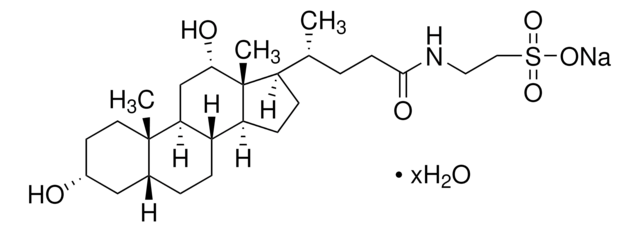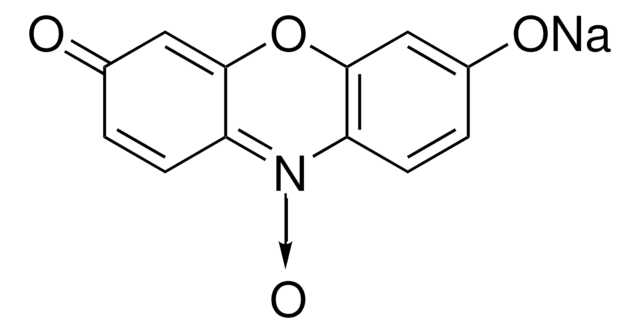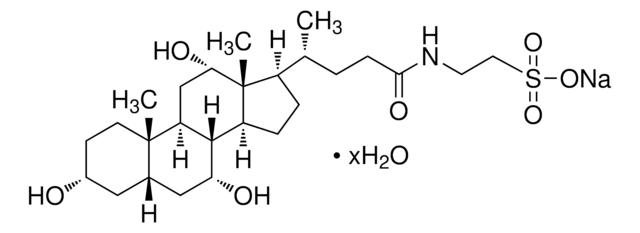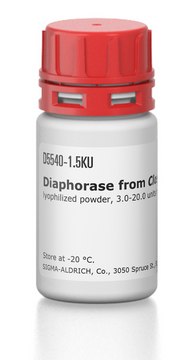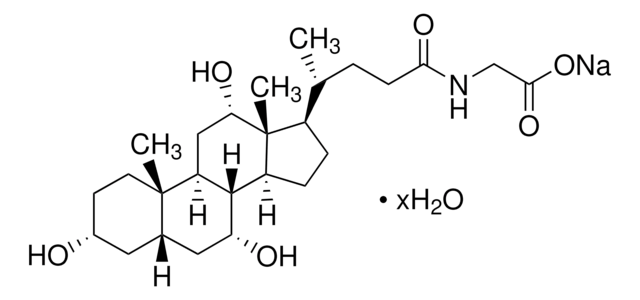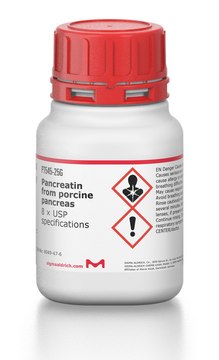H1506
3α-Hydroxysteroid Dehydrogenase from Pseudomonas testosteroni
≥15 units/mg protein
Synonym(s):
3α-Hydroxysteroid:NAD(P)+ oxidoreductase
About This Item
Recommended Products
biological source
bacterial (Pseudomonas testosteroni)
Quality Level
form
lyophilized solid
specific activity
≥15 units/mg protein
purified by
chromatography
composition
Protein, ≥25%
foreign activity
β-hydroxysteroid dehydrogenase ≤0.5%
alcohol dehydrogenase ≤0.05%
storage temp.
−20°C
Looking for similar products? Visit Product Comparison Guide
Application
- in the preparation of composite electrode platform to for the determination of androsterone
- in potassium phosphate buffer for the bioluminescent assay of bile acids in serum
- for total bile salts assay using an enzymatic method
Biochem/physiol Actions
Unit Definition
Physical form
Storage Class Code
11 - Combustible Solids
WGK
WGK 3
Flash Point(F)
Not applicable
Flash Point(C)
Not applicable
Personal Protective Equipment
Regulatory Information
Choose from one of the most recent versions:
Certificates of Analysis (COA)
Don't see the Right Version?
If you require a particular version, you can look up a specific certificate by the Lot or Batch number.
Already Own This Product?
Find documentation for the products that you have recently purchased in the Document Library.
Our team of scientists has experience in all areas of research including Life Science, Material Science, Chemical Synthesis, Chromatography, Analytical and many others.
Contact Technical Service